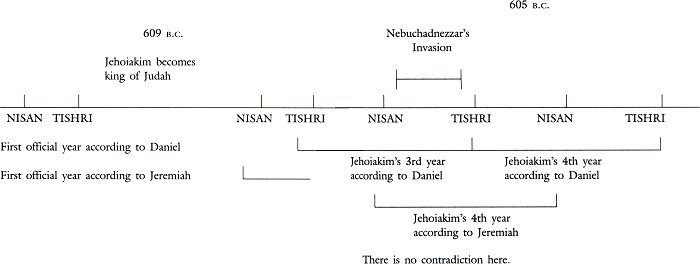Daniel 1:1b—Is the date given here of Nebuchadnezzar’s invasion in contradiction to the date given in Jeremiah 46:2?
Problem: The Book of Daniel begins with the dating of the invasion of Nebuchadnezzar in the third year of the reign of Jehoiakim of Judah. However, in Jeremiah 46:2, the date of Nebuchadnezzar’s invasion is given as during the fourth year of the reign of Jehoiakim of Judah. Which is correct?
Solution: Both statements are correct. The difference is a result of two different calendar systems used by the two prophets. Daniel employed the Tishri (around October) calendar system which was the first month of the new year on the Hebrew calendar. Jeremiah, whose prophecy concerned the coming invasion of the Assyrian armies, employed the calendar of the Assyrians that marked Nisan (around April) as the first month of the new year. Jehoiakim came to the throne in the month of Tishri in 609 b.c. The official reckoning of a king’s first year starts on the first day of the new year, Tishri 1. Since Jehoiakim became king of Judah several days after the first day of the new year, his first official year as king did not begin until the first day of the following year. For Daniel, this meant that Jehoiakim’s first official year began on the first day of Tishri, almost a whole year later. For Jeremiah, this meant that Jehoiakim’s first official year began about six months later on the first day of Nisan.

Nebuchadnezzar’s invasion took place in the summer of 605 b.c., between the months of Nisan and Tishri. This means that according to Daniel’s reckoning, it was only the third official year of Jehoiakim’s reign, but according to Jeremiah’s reckoning it was Jehoiakim’s fourth official year as king of Judah.
See All Problems
This excerpt is from When Critics Ask: A Popular Handbook on Bible Difficulties (Wheaton, Ill.: Victor Books, 1992). © 2014 Norman Geisler and Thomas Howe. All rights reserved. Used by permission. Click here to purchase this book.














